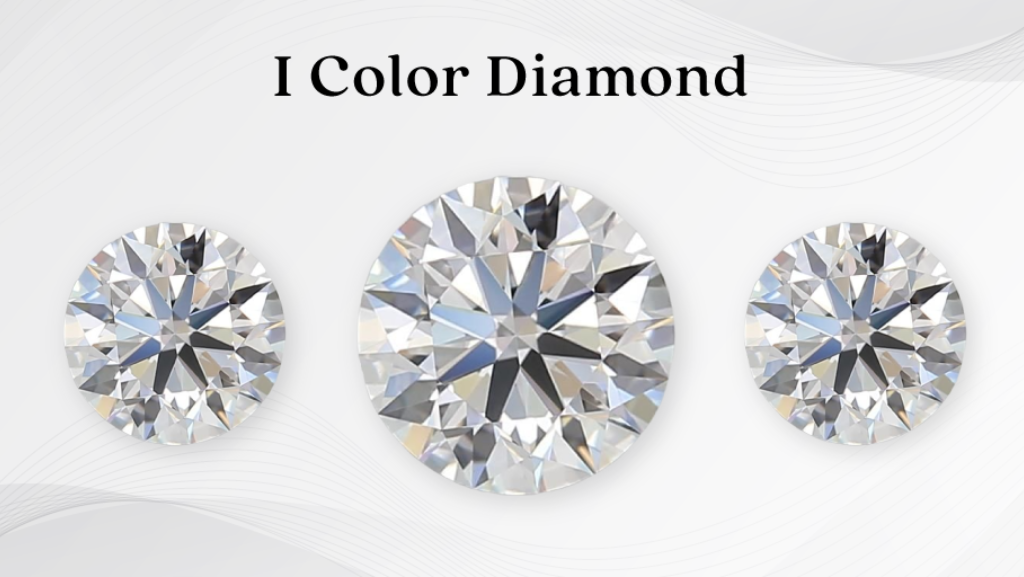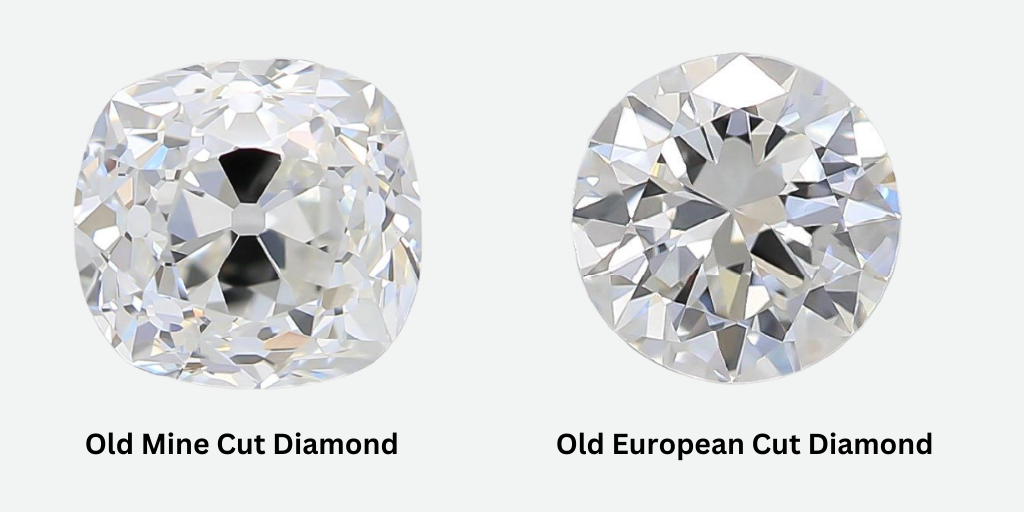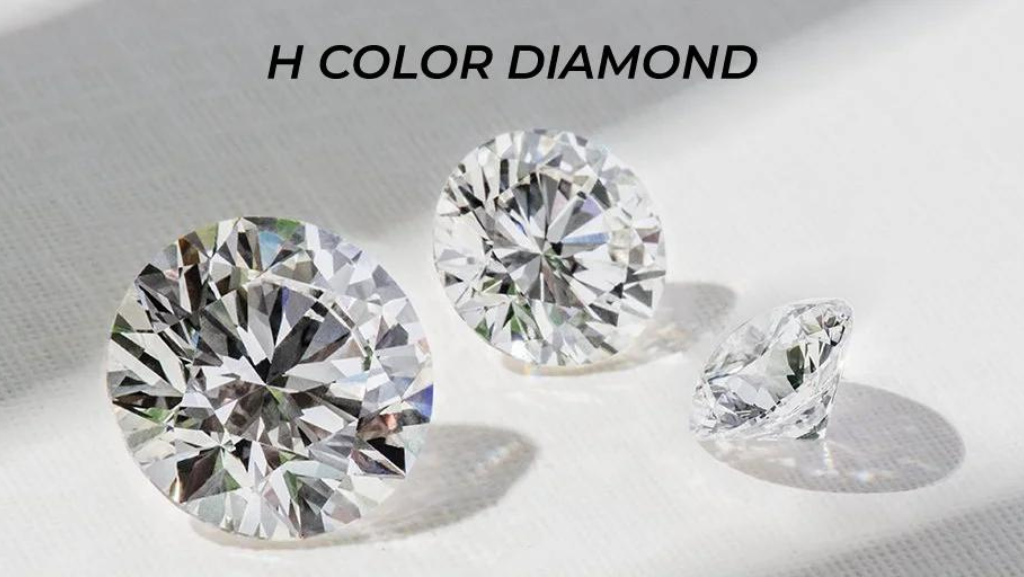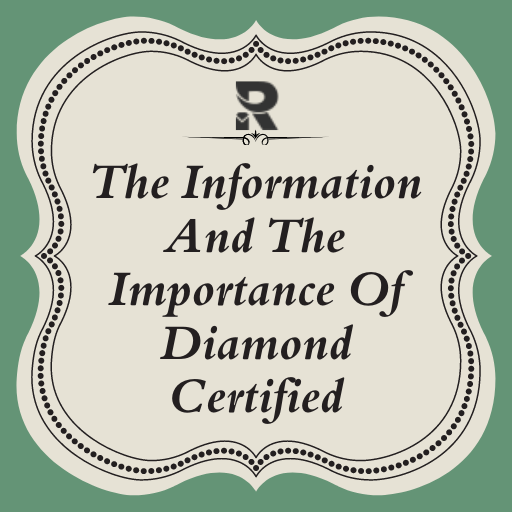
A diamond certification is a document that describes all of the characteristic traits of the diamond you purchase. It is provided by any one of the following third-party labs:
- GIA – GEMOLOGICAL INSTITUTE OF AMERICA
- AGS – AMERICAN GEM SOCIETY
- EGL – EUROPEAN GEMOLOGICAL LABORATORIES
- GSI – GEMOLOGICAL SCIENCE INTERNATIONAL
- HRD – HOGE RAAD-VOOR DIAMANT
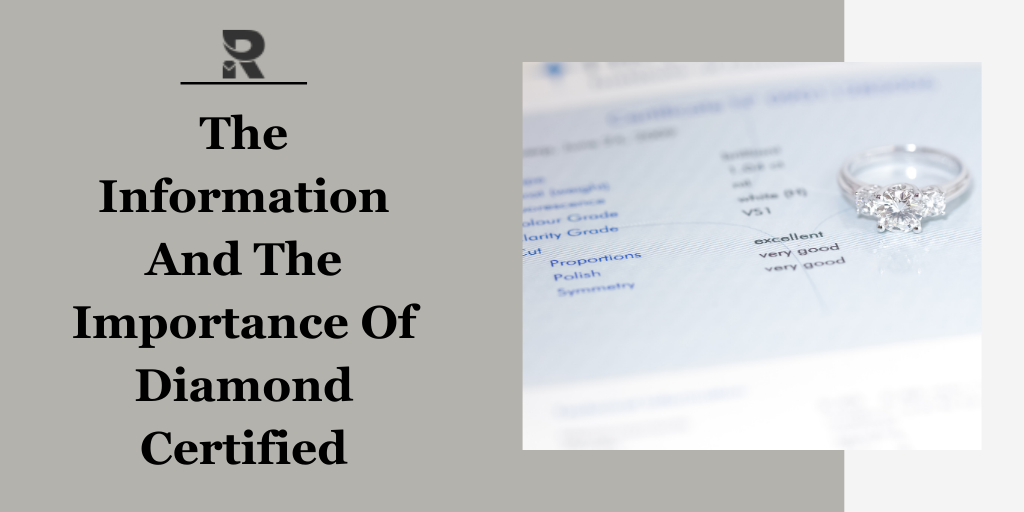
A diamond certification should also be scrutinized along with diamond characteristics while buying a diamond. Each of these laboratories has a separate grading system for their diamonds and their certification is issued accordingly. The certificate will provide details about the diamond such as its color, clarity, and dimensions.
Every single diamond is evaluated by experts at these labs and graded according to their grading system.
The tricky thing about these certifications is that the grading system for each of these laboratories are not consistent with each other and sometimes the difference in their grading system can be significant.
As a result, you may not be able to compare the same two diamonds having a certification issued from two different labs. Hence you must purchase a diamond that is certified by the most reputable lab and that inspect the diamond yourself before actually purchasing it.
These reputed labs, institutions, or organizations guarantee authenticity and genuinely.
WHAT CAN YOU FIND ON A DIAMOND CERTIFICATE?
- Each laboratory has its certification formats, however, certain basic information is common to all diamond certifications.
- The 4c’s of a diamond: Their cut, carat, clarity, and color are always mentioned.
- Most certificates come with a 3D map of the diamond you purchase. The 3D print gives you information about the exact locations of the blemishes and inclusions on the diamond.
- Enclosed in the certificate is an evaluation report on the polish and finishing details of the diamond.
- It also comes with a grading report, which is made after expert evaluation of the clarity and color of the diamond.
THE MOST REPUTABLE DIAMOND CERTIFICATION LABORATORIES
Almost every country has many local diamond certification laboratories, however, in the diamond industry, only four to five international laboratories out of the lot are considered as the most accurate and reputed industries.
The GIA – GEMOLOGICAL INSTITUTE OF AMERICA
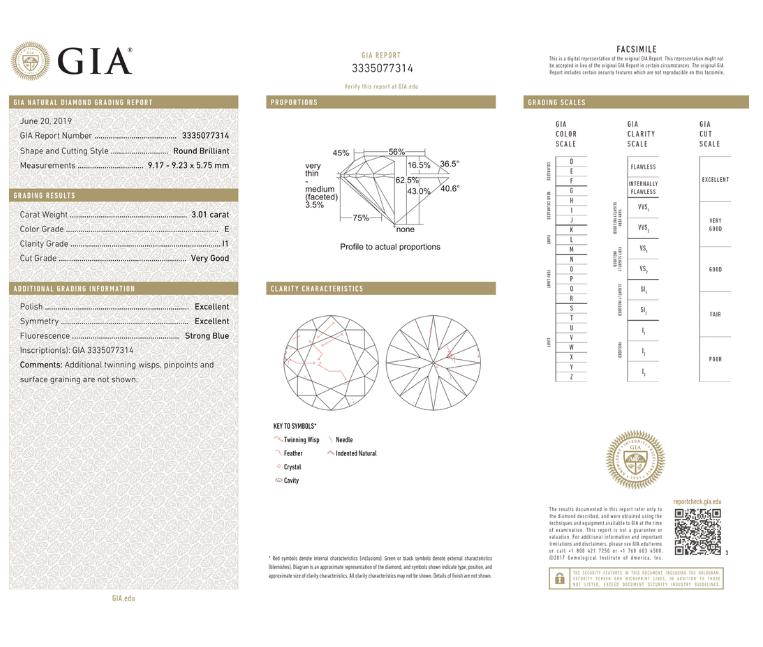
These are perhaps one of the oldest and globally recognized laboratories out there and arguably have the highest standards when it comes to grading diamonds.
They have the most educated experts who use the most advanced technologies and the firmest guidelines to grade their diamonds. They were the official founders of the science behind diamond grading.
In their laboratories, therefore a certificate issued by the GIA is unquestionably the most accurate which makes purchasing diamonds certified by them highly reliable.
Their secondary most notable fact is that they do not have a financial stake in the sale of diamonds, hence this gives them room to evaluate and grade diamonds based on an extensive range of parameters compared to labs that are financially involved in the sale of diamonds.
They have a stellar reputation when it comes to the grading of the color and clarity of the diamond. Since these are the more subjective characteristics of a diamond and carriable according to the buyer’s perspective. Hence the grading of these scales is more strict compared to other parameters.
SOME PARAMETERS FOLLOWED BY THE GIA ARE:
- The evaluation date of the diamond.
- Its dimensions (given in mm)
- The shape and cutting design of the diamond
- The cutlet size and symmetry of the diamond
- The cutting grade (evaluated as – excellent, very good. Good, and poor)
- The carat weights
- The table and depth percentages.
- The proportion diagram of the diamond
- Its polish grade and girdle thickness
- The color grade (from “colorless” to “light yellow” or D-J)
- The clarity grade of the diamond (IF, VVS1, VVS2, VS1, VS2, SI1, SI2)
- A 3D diamond plot representing all inclusions and blemishes of the diamond.
- The fluorescence grades.
- The laser inscriptions (if applicable)
- The security features of the diamond
- And general comments
You can also check the validity and authenticity of your GIA certification online on their website. All you have to do is:
- Go to their webpage and find “GIA REPORT CHECK”
- Insert the Report number found on the certificate given to you.
- Post CAPTCHA you will receive the certificate with the grading details of the diamond
The consistency of excellent work done by the GIA over the years makes it one of the most reliable and recommended laboratories by gemologist experts. A few companies which sell GIA certified diamonds are:
- RRP Diamonds
- The Brian Gavin Diamonds
- James Allen
- Blue Nile
Also Read: Diamond Fluorescence: Good Or Bad Doest It Affect Value?
THE AMERICAN GEM SOCIETY (AGS)
The American Gem Society was founded in 1966 to protect buyers from fraudulent retailers. They were also the first organization who released information concerning a diamond’s cut grading system on their diamond certificates.
Hence, it is one of the go-to choices of many diamond retailers even today. Some of their hired experts are graduates of their gemological education program.
The AGS cut grade system was initiated way before the GIA. They provide a cut grade scale from 0 to 9 (0 being the most ideal and 9 the least.)
The AGS, despite once being the top laboratory thanks to their cut grade game, have experienced a significant loss in shares in the market since the GIA stepped up their cut grade game.
Although for the longest time only AGS-certified diamonds were considered as the most ideal. They may not have the initial advantage any longer, but they are still highly reputed in the market. There is not much that distinguishes the GIA from the AGS other than the fact that AGS considers itself as more refined. To break it down for you the “upgrade shopping” is perhaps the only monopoly that can be played by the retailers or manufacturers over here. When it comes to subjective grades such as color and clarity, they can suffer through what is commonly referred to as the “observers bias”, for example, consider a diamond which could be graded as a weak “I” color grade or a strong “J”. Now the “I” grade is one grade higher than the “J” color grade hence more valuable and expensive. The same diamond is most likely to receive a “J” grade for the specialists at GIA. But the retailers can always decide to send the same diamond to the AGS who are most likely to grade it as an “I” hence increasing the value of the diamond thereby its price.
This perhaps might be the oldest trick in the book for retailers to make more money. On a larger scale, retailers or manufacturers prefer to send their diamonds to AGS to allot a higher color grade for such diamonds. Which have such an in-between color and then top it with the jewelry manufacturing cost they can make much more than the diamonds worth.
Sometimes it’s also possible that the AGS and the GIA may give the same color grade, but they would receive an upgrade which would at the very least make up for the cost of sending it to the AGS. But overall the authenticity of AGS is unmatched and their laboratories are highly reliable. AGS and GIA certifications are the most commonly recommended by large brand retailers such as Blue Nile, James Allen, Tiffany and Co, and other such equivalent brands
THE INTERNATIONAL GEMOLOGICAL INSTITUTE (IGI)
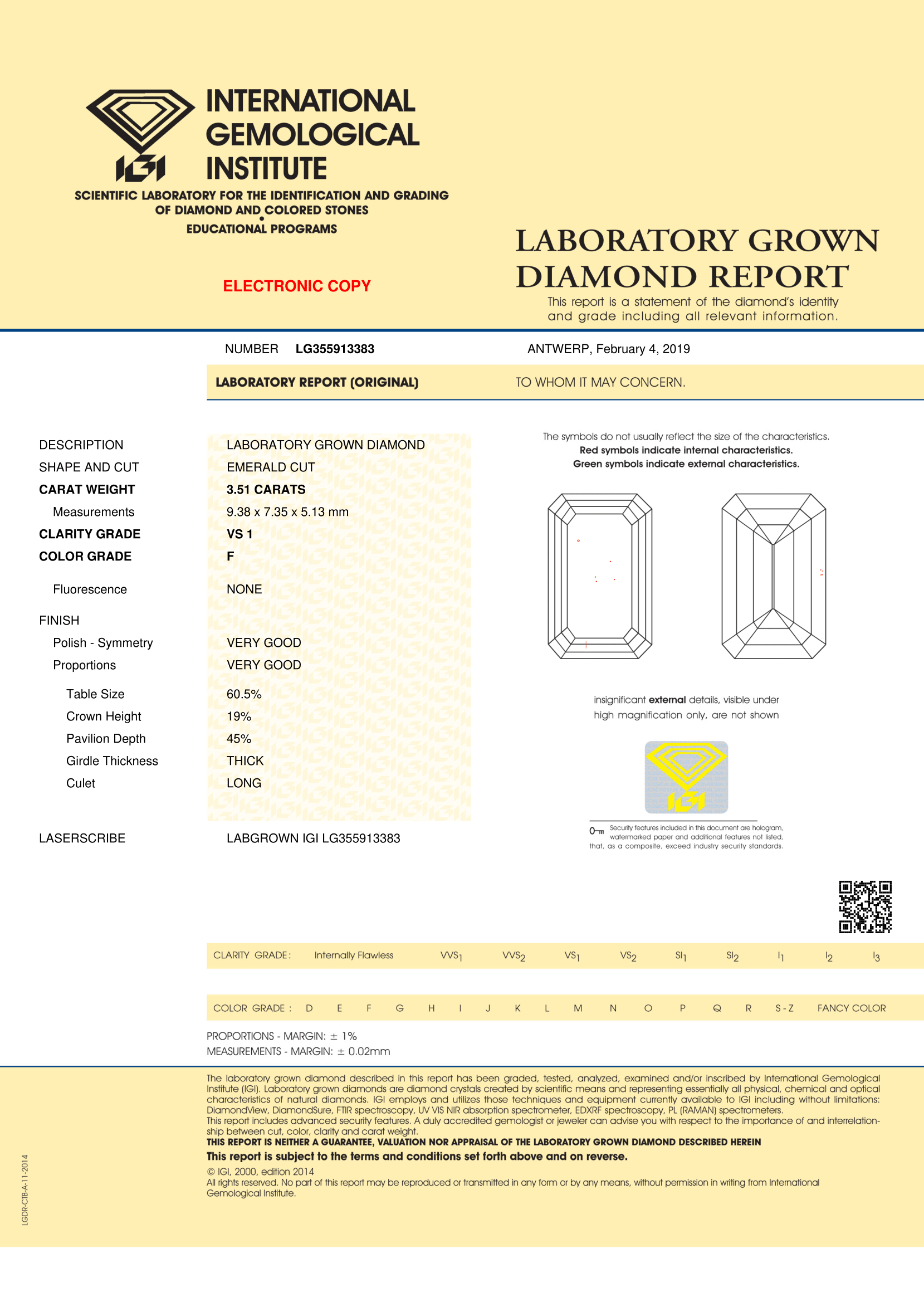
The IGI is one of the most renowned gemological institutes out there. They are more popular for their educational programs and are said to be highly proficient in the analysis of diamonds. In the diamond industry, they are referred to as the “blue color workhorse”. They are highly preferred by jewelry chains in China and the United States. Hence on an international level, an IGI certification is deemed trustworthy for any premium quality diamond.
But things get interesting for IGI because unlike the GIA and the AGS, they work at a faster rate and their prices are much more appealing than the GIA.
They are less of a quality evaluating laboratory and more of a diamond certificate issuing industry, however, their standards are still better than most lesser-known gemological institutes out there.
As satisfying as their fast work and feasible prices are for the diamond retailers and manufacturers they may not prove to be as satisfying for the consumer whose priority is the quality of the diamond over its price. Some people do not mind paying a few dollars more for a diamond of a higher quality.
The IGI although renowned have much fewer grading standards compared to those of the GIA.
Four diamonds of similar characteristics were sent to different laboratories for the valuation of color and quality since these are the least objective diamond traits. Their evaluated grade tells you more than you need to know about these labs.
To further learn how IGI grades, we sent four diamonds to various lab entities including the IGI, EGL, GSI, and HRD for Clarity and Color grading. Because these two categories are
EUROPEAN GEMOLOGICAL LABORATORY (EGL)
The European Gemological laboratory was founded in Belgium in 1974. They are mostly known for inventing the SI3 clarity grade, this grade is allotted to a diamond that has inclusions beyond the SI2 grade which are not visible by the naked eye unless it is examined by a specialist under a controlled environment.
Although widely reputed, it is quite commonly known for evaluating diamonds higher than their actual value and thereby setting an insanely inflated rate for the diamond.
Most of the time you end up purchasing a diamond of inferior quality at a higher price. On the other hand, for the same price, you could get a GIA-certified diamond of much better quality as the GIA standards of evaluating a diamond are considerably higher than the IGI.
It is better to buy a GIA-certified diamond which may be one- or two-color grades less or clarity grades for a better assurance of purchasing a premium quality diamond at a decent price. In the tables above you can observe that the EGL gave the highest clarity grade for the 4th diamond out of all the other laboratories, which just does more to prove the point that they end up evaluating the diamond with a higher grade than what it is.
HOGE RAAD VOOR DIAMANT (HRD)
The HRD Certification was founded in 1973 in Belgium, this organization is primarily based in Europe and is more preferred in the European Continent. However, one cannot deny the global recognition it has earned. Yet their grading methods are also quite synonymous with the European Gemological Laboratory (EGL). Upon strict inspection it was discovered that the specialists end upgrading a diamond two to three color and clarity grades higher than the GIA, hence they come with a greater price and premium. Their grading system has proved to be quite inconsistent over the years.
In the above tables, you can see the clear difference in their grading system compared to the other labs. To conclude it’s quite obvious that an “I” color grade assigned by HRD would not be the same in quality as a GIA-certified “I” color grade. Neither will their prices coincide. The value of a GIA grade would be higher.
GEMOLOGICAL SCIENCE INTERNATIONAL (GSI)
The gemological Science International was founded in 2005, in New York. It is relatively still new compared to its veteran partners in the industry.
They did not invent any new scales or grades in the evaluating system of the diamonds. They, however, have been certifying diamonds for some of the largest retailers of diamonds in the United States such as the:
- Jared the Galleria of Jewelry
- Kay
- Zales
Being partnered with such major companies have added a few gold stars to their evaluating system but it does not nullify the fact that their grading standards too are far beneath the GIA, their grading systems are more inconsistent than IGI and HRD as well, which overall makes their objectivity a lot more questionable.
A diamond certified by the GSI may cost less compared to the same diamond graded by the GIA but its quality would be questionable. If you are still inclined to purchase a GSI certified diamond, then the best recommendation would be that it is also GIA or AGS certified so that you can be assured that you are getting the best quality of the diamond.
Observing the tables above we can take note of the inconsistency of the GSI grading system. Due to their loose grading system, it proves very difficult to compare any to diamonds.
IMPORTANCE OF A DIAMOND CERTIFICATION
A diamond certification is extremely important for any diamond you buy because not only does it certify what you are buying, it can serve as proof of purchase. It is always in your best interest to have proof of any large purchase you make. The diamond certificate gives you all the information regarding the diamond you purchase.
The certification can prevent you from making wrong purchases as without the certificate you would have no choice but to believe every word the retailer sells to you and the probability of you getting ripped off in that situation is much higher.
For example, a common person who does not know diamonds would believe the shiniest diamond is of the best quality. However, in reality, a diamond of a lesser grade with the right cut and size can be more visually appealing than a stone of a larger size with more blemishes and inclusions. So, it is paramount that you understand the diamond grading system, and what each grade and its subsequent subgrade stand for.
Also Read: Why Are Pink Diamond So Rare And Exclusive?
It can prove to be a daunting task to evaluate a diamond based on all the grades available. So, to avoid being misled it is preferred that you do some background research on the different diamond grades, select the characteristics that you wish to keep and highlight out the ones which you can neglect, and explain them to your retailer.
But do keep in mind that the higher you go on the grade scale for any of the 4c’s (cut, carat, clarity, color), the more your choice of jewelry would cost. So it is best if you narrow down your selection initially to save time and money.
It’s always best to start with the trait that is the most important for you and narrow that down, most commonly it is either the size of the cut of the diamond. It makes the diamond selection faster as you can then select the next set characteristic that would complement your most important characteristic.
CONCLUSION
It is essential that you ask for a diamond certificate while buying a diamond because otherwise there is no proof for your purchase.
Secondly, it is even more important than the certificate is issued from a reliable source. The GIA, AGS, and IGI are the most recommended certification laboratories out there.
You may find that their certifications are more expensive compared to the other labs in the market for the same grade of diamond.
